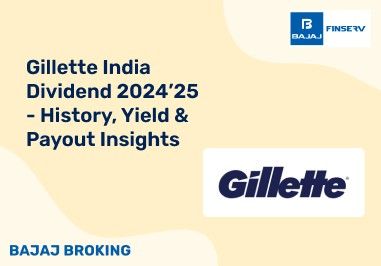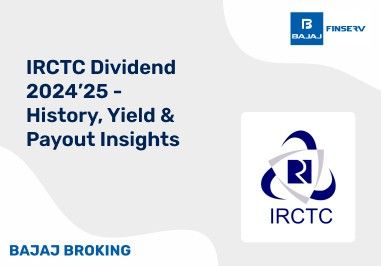BAJAJ BROKING
Tankup Engineers IPO is Open!
Open a Free Demat Account
Trade Now, Pay Later with up to 4x
Track Market Movers Instantly
What Is Max Pain In Options?
In the world of options trading, the term “Max Pain” might sound ominous, but it’s a concept that can provide valuable insights for traders. Let’s dive into what Max Pain is, how it’s calculated, and why it matters.
What is Max Pain?
Max Pain refers to the price level at which options traders experience the most pain or loss. It’s the point where the majority of options contracts expire worthless, causing maximum financial discomfort for option buyers. Conversely, it tends to benefit option sellers (writers).
Explaining Max Pain Theory
Max Pain theory, also known as the maximum pain theory, is a concept related to options trading. The break down for it is as follows :
- Max Pain Price:
This is the strike price at which the stock would cause maximum financial losses for the largest number of option holders at expiration. It’s the point where option owners (buyers) feel the most pain, while option sellers may stand to reap rewards.
- How It Works:
According to this theory, the price of an underlying stock tends to gravitate towards its “maximum pain strike price” as option expiration approaches. This means that most options (in dollar value) will expire worthless.
- Hedging by Option Writers:
Option writers (such as market makers) hedge the contracts they’ve written. They adjust their positions in the stock to drive the price toward a closing price that benefits them or at least hedges their payouts to option holders.
- Calculation:
Max pain calculation involves summing up the dollar values of outstanding put and call options for each in-the-money strike price. The goal is to find the strike price where the most options expire worthless.
- Controversy:
Critics debate whether this tendency for stock prices to gravitate towards max pain is a matter of chance or market manipulation.
What Is Max Pain In Options?
Options Contracts and Strike Prices:
- Options contracts provide traders with the freedom to purchase or sell an underlying asset, like stocks, at a pre-established price (known as the strike price) on or before a designated date (the expiration date), without imposing an obligation to do so.
- Each option contract corresponds to a specific strike price.
Open Interest and Max Pain Calculation:
- Max Pain is calculated using open interest, which represents the total number of outstanding options contracts at different strike prices.
- The theory assumes that market participants (especially option writers) manipulate the stock price to minimise their losses.
- The strike price with the highest open interest tends to be the Max Pain level.
Options Writers’ Strategy:
- Option writers (sellers) aim to profit from time decay and volatility by selling options.
- They hedge their positions by adjusting the stock price toward the Max Pain level.
- This manipulation benefits option writers because most options expire worthless.
Also Read: Implied Volatility In Options
How Traders Use Max Pain
Trading Strategies:
- Traders can use Max Pain as part of their analysis when making trading decisions.
- If other technical indicators align, they might consider option writing strategies based on Max Pain.
Expiration Week Behaviour:
- During expiration week, stocks often gravitate toward the Max Pain level.
- Traders can observe this behaviour and adjust their positions accordingly.
Risk Management:
- Understanding Max Pain helps traders manage risk.
- If you hold options near expiration and the stock is close to the Max Pain level, consider your exit strategy.
Calculating Max Point
To determine the Max Pain point, follow this somewhat time-intensive yet straightforward calculation. Essentially, it involves summing the total rupee value of all in-the-money call and put options. Here’s how you can calculate the Max Pain point:
1. Calculate the variance between the underlying asset’s current price and the strike price of the contract.
2. Multiply this variance by the open interest at that particular strike price.
3. Add the rupee value of both the call and put options at that strike price.
4. Repeat these calculations for each strike price within the contracts.
Upon completing this process for all strike prices, the strike price with the highest value obtained will represent the Max Pain point.
Utilising The Concept Of Max Pain In Options Trading
As options contracts approach their expiration date, traders adjust their positions in the underlying asset, be it buying or selling shares, in order to influence the closing price to their advantage. They also consider hedging their commitments to options holders. For instance, a call option writer may hope for the stock price to decrease, while a put option writer may prefer an increase in share prices.
According to the Max Pain theory, the expiration price tends to gravitate toward the level at which investors would experience the most significant losses. With this in mind, traders can either buy or sell contracts to profit when the Max Pain point deviates significantly from the current market price of the shares. For instance, if Bank Nifty’s spot price is Rs 25,800, your contract’s spot price is Rs 25,600, and the Max Pain point is at Rs 25,000, traders may consider selling Bank Nifty options accordingly.
Moreover, traders can employ the Max Pain point to hedge against potential losses on options positions or secure profits before substantial losses occur. For example, if you hold Bank Nifty call options with a strike price of Rs 26,700, and the current spot price is Rs 27,000, with the Max Pain point at Rs 26,500, it’s advisable to sell the contract rather than waiting for its expiration. This allows you to capture an intrinsic value of Rs 300 and make a sensible move to secure a modest gain.
Conclusion
Max Pain isn’t a crystal ball for predicting stock movements, but it provides valuable context for traders. Remember that thorough analysis—combining technicals, fundamentals, and market sentiment—is crucial before making any trading decisions based on Max Pain Theory.
Share this article:
Read More Blogs
Disclaimer :
The information on this website is provided on "AS IS" basis. Bajaj Broking (BFSL) does not warrant the accuracy of the information given herein, either expressly or impliedly, for any particular purpose and expressly disclaims any warranties of merchantability or suitability for any particular purpose. While BFSL strives to ensure accuracy, it does not guarantee the completeness, reliability, or timeliness of the information. Users are advised to independently verify details and stay updated with any changes.
The information provided on this website is for general informational purposes only and is subject to change without prior notice. BFSL shall not be responsible for any consequences arising from reliance on the information provided herein and shall not be held responsible for all or any actions that may subsequently result in any loss, damage and or liability. Interest rates, fees, and charges etc., are revised from time to time, for the latest details please refer to our Pricing page.
Neither the information, nor any opinion contained in this website constitutes a solicitation or offer by BFSL or its affiliates to buy or sell any securities, futures, options or other financial instruments or provide any investment advice or service.
BFSL is acting as distributor for non-broking products/ services such as IPO, Mutual Fund, Insurance, PMS, and NPS. These are not Exchange Traded Products. For more details on risk factors, terms and conditions please read the sales brochure carefully before investing.
Investments in the securities market are subject to market risk, read all related documents carefully before investing. This content is for educational purposes only. Securities quoted are exemplary and not recommendatory.
For more disclaimer, check here : https://www.bajajbroking.in/disclaimer
Our Secure Trading Platforms
Level up your stock market experience: Download the Bajaj Broking App for effortless investing and trading













